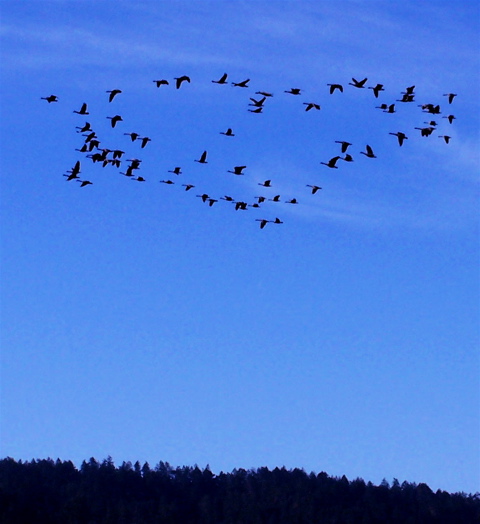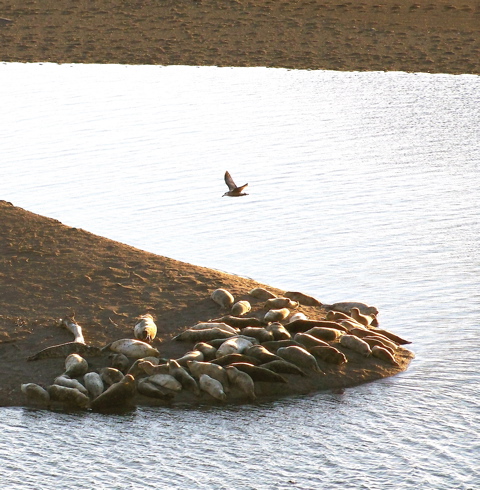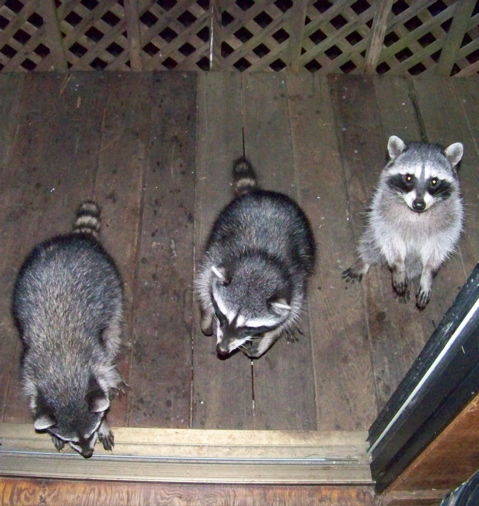Mon 23 Feb 2009
Three-year drought comes to a symbolic ending as Nicasio Reservoir overflows
Posted by DavidMitchell under General News, History, Marin County, Point Reyes Station, West Marin nature, Wildlife
[7] Comments
Nicasio Reservoir overflowed early today, symbolically extricating West Marin from California’s three-year drought. The land draining into the Marin Municipal Water District reservoir has received seven inches of rain in the past eight days, district spokeswoman Libby Pischel told me.
On April 1, the amount of water in MMWD’s reservoirs will determine whether the district considers this a drought year, Pischel said, and district projections now are far rosier than they were at the end of January. MMWD reservoirs currently are 75 percent full, she noted, adding that they would normally be 85 percent full at this time of year.
The present storm system and one a week ago have been especially welcome in Bolinas. Two weeks ago Bolinas Community Public Utility District’s main reservoir, Woodrat II, was essentially dry, and BCPUD directors had voted to limit each household, regardless of size, to 150 gallons of water per day. By mid-afternoon today, the reservoir had risen to within two feet of capacity.
“We’re very grateful,” BCPUD general manager Jennifer Blackman told me during this afternoon’s rainfall. “We’re in a much better place than we were last month.” Although “rationing is still in place,” Blackman said, BCPUD directors last week held off voting on further restrictions because the current rain was being forecast.

Nicasio Reservoir that overflowed today is one of seven belonging to Marin Municipal Water District, which serves the San Geronimo Valley and most of East Marin south of Novato.
Shortly after noon, I began clambering up the embankment across the spillway from the dam in order to photograph the historic event.
Twice before in the past 30 years, I did this for The Point Reyes Light to record the ends of previous droughts. It’s never an easy climb. The slope is rocky and extremely steep with few hand holds in some places and dense brush in others.
This time was worse than ever. I was halfway to a ledge high enough to look down on the reservoir when my feet slid out from under me. I dropped to my hands only to have my camera fall out of a parka pocket. With dismay I watched as it tumbled away down the rocky slope.
Gloomily, I crawled and slid after it, muddying my pants, as well as bloodying my hands on the rocks. When I finally reached the bottom, however, I found a happy surprise. The camera had survived the rough descent better than I had. Kodak cameras are apparently as sturdy as they’re cheap. After wiping mine off, I secured it around my neck and once again began climbing.
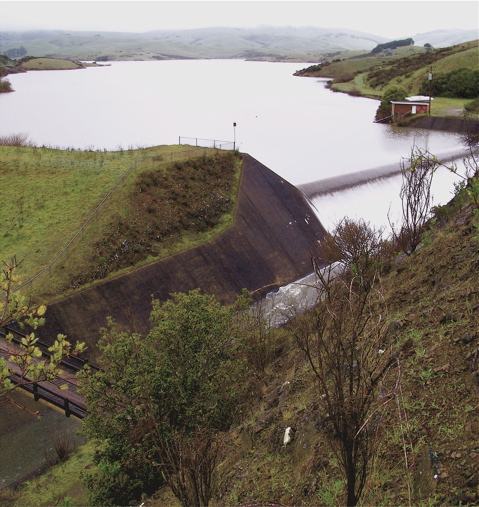
Luckily, deer trails crisscross the slope, which made traversing it at least possible although not easy. But when I finally reached the ledge from which I could photograph the dam and spillway with the reservoir behind them, the scene easily compensated for my scrapes and bruises.
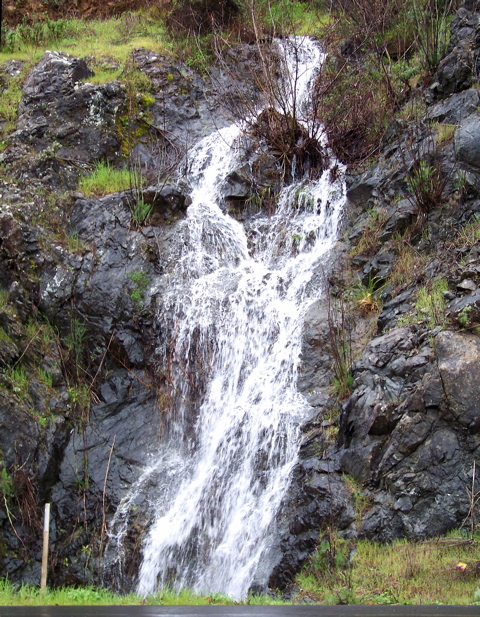
Seasonal waterfall. Driving from Point Reyes Station to the dam and back, I noted that every gully along the Point Reyes-Petaluma Road had become a stream which flowed into Papermill/Lagunitas Creek. When rainfall is normal, these small waterfalls are annual roadside attractions.
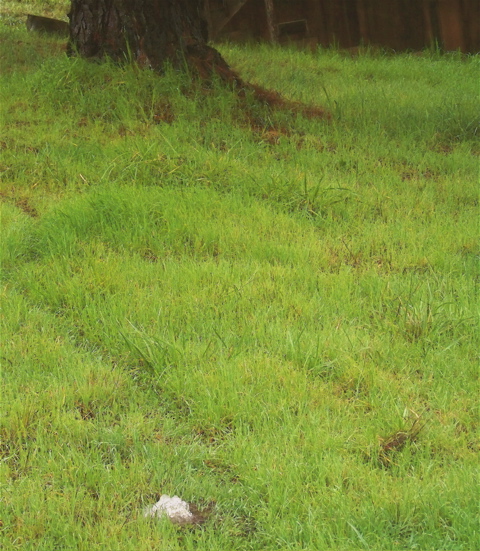
My hill too changes during heavy rains. When I looked out the dining-room window yesterday morning (that’s my cabin in the background), I spotted what appeared to be a piece of plastic flapping in the grass. My first impulse was to wait until the rain stopped before going outside to pick it up, but then I realized that what appeared to be plastic was actually water bubbling up.
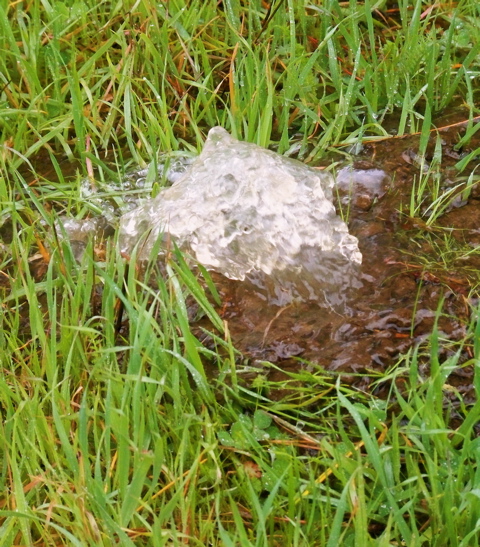
An artesian spring had sprung up out of a gopher hole. That’s common in these coastal hills and, in fact, can damage ranchers’ pastures. During heavy rains, hillsides that have become honeycombed with gopher tunnels act like a sponge. If the top two or three feet of soil become over-saturated, wholesale slumping can occur.
And finally for all you cynics out there, no, there is no water pipe or septic line uphill from this artesian spring. Stay warm and enjoy the bad weather. With any luck, we’ll get more of it.

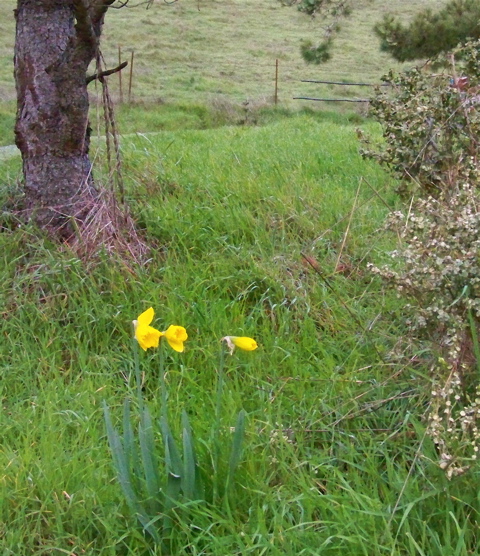
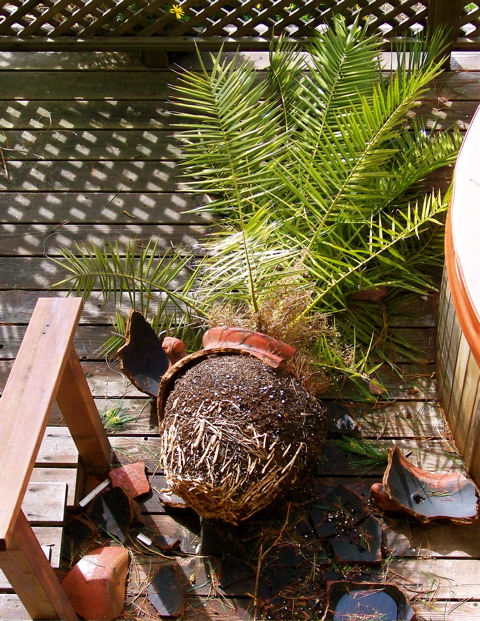 Worse yet, a terra cotta pot more than two feet high and holding a palm tree was blown over and busted on my deck. The last time wind busted a big pot at my cabin was just over two years ago, and it wasn’t this big. Finding a replacement large enough to hold the root ball required a trip over the hill Wednesday and a lot of driving around. After extensive searching, I was able to find exactly one that was big enough.
Worse yet, a terra cotta pot more than two feet high and holding a palm tree was blown over and busted on my deck. The last time wind busted a big pot at my cabin was just over two years ago, and it wasn’t this big. Finding a replacement large enough to hold the root ball required a trip over the hill Wednesday and a lot of driving around. After extensive searching, I was able to find exactly one that was big enough.
